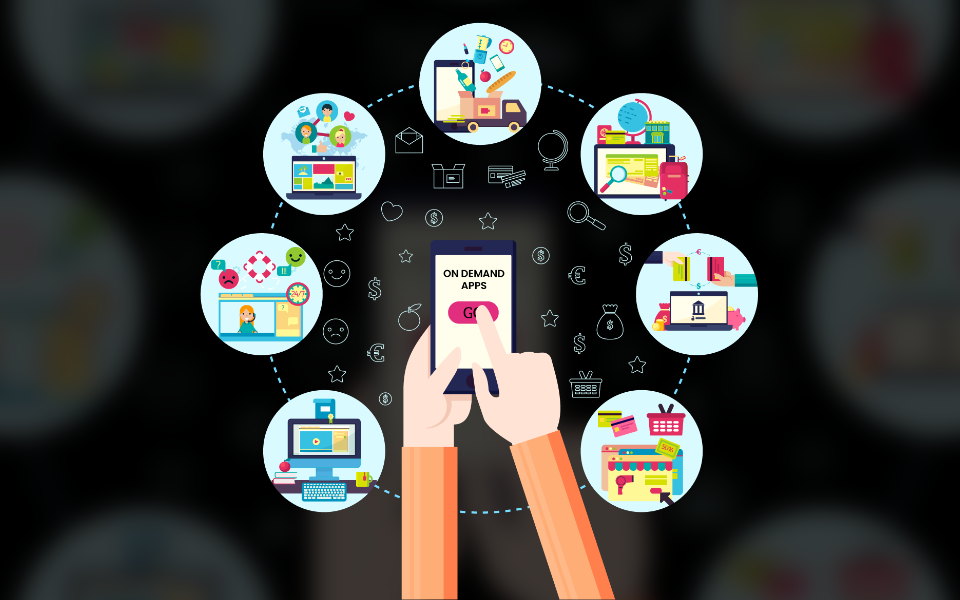In the digital economy, customers expect services faster, easier, and more personalized than ever before. Waiting hours—or even minutes—for a product or service feels outdated in a world dominated by one-click purchases, same-day deliveries, and instant rides.
This demand for speed and convenience is fueling the rapid rise of on-demand app development, enabling businesses to connect with customers in real time and meet their needs without delay.
From food delivery platforms to home service booking apps, on-demand solutions are revolutionizing the way businesses operate, communicate, and grow. This article explores why organizations are making this shift, what it offers, and how it delivers instant connectivity that consumers now see as a standard.
Understanding On-Demand App Development
In a world where convenience has become the ultimate competitive advantage, understanding the mechanics and potential of on-demand app development is crucial for any business looking to stay relevant.
What Is On-Demand App Development?
On-demand app development is the process of creating mobile or web platforms that instantly connect users with products or services. Whether it’s ordering groceries, booking a taxi, or scheduling a plumber, these apps remove friction from the transaction process.
At their core, they match demand (users seeking services) with supply (service providers) in real time—streamlining discovery, ordering, and payment.
Why Businesses Are Embracing On-Demand Apps
In a market where speed is often the deciding factor for customer loyalty, businesses are finding that on-demand apps offer a powerful way to deliver services faster, better, and more conveniently than ever before.
1. Meeting Customer Expectations for Speed
Today’s consumer is impatient. According to industry surveys, more than 70% of users expect service delivery within the same day—and many within the hour.
On-demand apps allow businesses to:
- Provide immediate service confirmation
- Enable real-time updates and tracking
- Reduce wait times to minutes rather than days
This responsiveness builds trust and keeps customers engaged.
2. Direct, Instant Communication
On-demand platforms typically include:
- Push notifications for updates
- In-app chat for direct provider-customer interaction
- Real-time tracking for location-based services
This constant, seamless communication fosters transparency and a stronger customer relationship, eliminating uncertainty about service status.
3. Expanding Market Reach
Without physical limitations, on-demand apps enable businesses to:
- Serve customers across cities or even countries
- Operate 24/7 without the need for physical presence
- Offer services to niche markets previously too small to target
This is especially valuable for startups looking to scale quickly without heavy infrastructure costs.
4. Leveraging Data for Smarter Decisions
Every transaction, search, and click generates data. On-demand apps collect this information in real time, helping businesses:
- Track popular services or peak times
- Personalize offers and promotions
- Forecast demand to optimize resources
For example, a delivery business can adjust staffing levels based on order patterns, reducing idle time and improving efficiency.
5. Creating New Revenue Streams
Beyond the core service, on-demand apps can generate income through:
- Subscription models
- In-app advertising
- Premium delivery charges
- Partner integrations
These diversified revenue streams strengthen financial stability while keeping the primary service affordable.
How On-Demand App Development Enables Instant Connectivity
Instant connectivity is not just about fast internet—it’s about creating seamless, real-time interactions between businesses and customers that remove every barrier to engagement.
Real-Time Service Matching
Modern on-demand platforms integrate advanced algorithms and geolocation features to match users with the nearest available provider instantly.
This minimizes travel time, reduces wait periods, and optimizes overall service efficiency.
Cloud-Based Infrastructure
Cloud hosting allows on-demand apps to handle thousands of simultaneous requests without lag.
Key benefits:
- High availability
- Scalability during peak demand
- Faster deployment of new features
This infrastructure ensures that connectivity is smooth, reliable, and capable of growing with demand.
Integrated Payment Systems
Instant connectivity isn’t only about communication—it’s also about closing transactions quickly.
Built-in payment gateways:
- Support multiple payment options (cards, wallets, UPI, crypto)
- Ensure secure, encrypted transactions
- Enable one-tap repeat purchases
This reduces the gap between decision and action, increasing conversion rates.
Push Notifications & Alerts
From order confirmations to delivery updates, push notifications keep users connected and informed every step of the way.
Well-timed alerts can:
- Reduce missed appointments
- Encourage repeat orders
- Build a habit loop that keeps customers returning

Industries Thriving with On-Demand Apps
While almost every sector can benefit from on-demand technology, certain industries have seen explosive growth by embracing it as a core business model.
1. Food & Beverage
Apps like Swiggy or Uber Eats dominate this space, offering instant ordering and delivery within minutes.
2. Transportation & Logistics
From taxi services to package couriers, instant ride-hailing and parcel tracking have transformed user expectations.
3. Healthcare
Telemedicine apps provide quick doctor consultations, prescription refills, and even doorstep sample collection.
4. Home & Lifestyle Services
From cleaning to repairs, users can book vetted professionals instantly via apps.
5. E-Commerce
Same-day and even same-hour deliveries are becoming a norm, blurring the line between online and offline retail.
Challenges and Considerations
While the benefits are compelling, businesses should be aware of:
- High competition – Standing out requires unique features or niche targeting.
- Technology investment – Quality app development requires skilled teams and robust infrastructure.
- Customer retention – Acquiring users is one thing; keeping them engaged is another.
Overcoming these challenges requires a strong strategy, continuous updates, and an unwavering focus on user experience.
The Future of On-Demand App Development
With AI, IoT, and 5G technologies becoming mainstream, instant connectivity will only improve.
Expect:
- Predictive service suggestions based on past behavior
- Voice-activated ordering for hands-free convenience
- Augmented reality features for immersive shopping or service previews
The businesses that adopt and innovate within this model will stay ahead of the curve.
Conclusion
The move toward on-demand app development isn’t just a passing trend—it’s a strategic response to evolving consumer expectations. Businesses that can connect instantly, communicate transparently, and deliver efficiently will dominate their industries.
Whether you’re in food delivery, healthcare, transportation, or home services, an on-demand platform can be the bridge between your business and the modern, impatient customer who values speed above all else.


